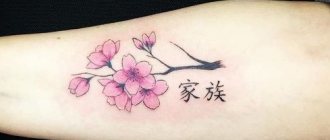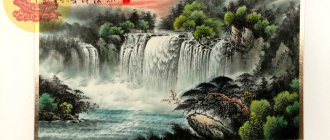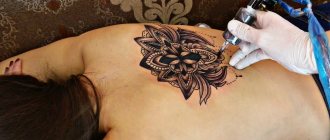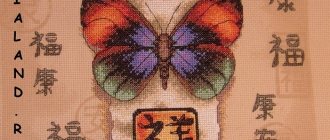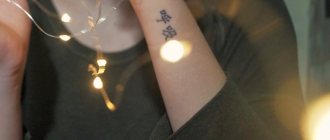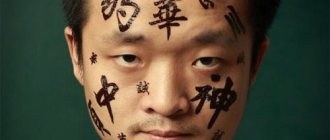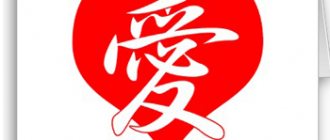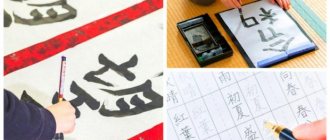The Chinese characters water, fire, earth, air, river, mountain, fish, as well as about 200 other simple characters that have come down to us from ancient times, go back in their history to the first fortune-telling pictograms used in the 18th-17th centuries BC era. Most often, such hieroglyphs are a simplified schematic representation of the object or phenomenon in question . Of course, over the centuries of their existence, the appearance of these symbols has gradually changed, but even in today’s simple hieroglyphs one can easily discern the images and meanings that the ancient Chinese put into them.
Cang Jie, the court historiographer of the legendary Yellow Emperor Huang Di, is recognized as the inventor of hieroglyphic writing in the Chinese tradition. Legend has it that he created the first simple wen 文 signs by observing the outlines of seas and mountains, the tracks of snakes and dragons, animals and birds, and the shadows cast by objects.
The first Chinese characters were signs for fortune telling, and later they were widely used in various philosophical teachings, mystical rituals and practices, such as Feng Shui. For example, three of the seven hieroglyphs considered today are among the five primary elements, which, according to Taoist beliefs, underlie any object or phenomenon of this world.
In addition, simple hieroglyphs are precisely those basic keys, those semantic units from which more complex characters of Chinese writing are composed. This means that having a good understanding of the logic of such signs and having learned them, it will be much easier for you to learn Chinese, read and memorize new characters.
Chinese character water
Let's start with the hieroglyph, which is part of the five primary elements of the ancient Chinese philosophy of Wu Xing. In this system, the element “water” is associated with such concepts as humidity, coldness, depth, mystery, rebirth, and secret knowledge. This element corresponds to the color black, the season - winter and part of the world - the north, where, according to the ideas of the ancient Chinese, large deep rivers flowed. For example, the Amur River, located north of China, is called 黑龙江 (Heilongjiang) by the Chinese, which means “Black Dragon River.”
The ancient pictogram of the hieroglyph “water” most closely resembled the flow of a river with several tributaries. Gradually, the appearance of the symbol changed, and the modern hieroglyph水(shuǐ) resembles a river flow much less, and yet, it is quite possible to guess river waves in the features of this sign.
Today, the Chinese use the character水(shuǐ) to denote both plain water and any other liquid . The same symbol can mean a stream or any body of water. It is listed as number 85 in the Chinese Character Key Chart .
The writing scheme for this hieroglyph is quite simple:
水(shuǐ) is included in a large number of complex characters:
- 水果(shuǐ guǒ) - fruit;
- 水力(shuǐ lì) “water power” - hydropower;
- 水手(shuǐ shǒu) “water master” - sailor or sailor;
- 水晶(shuǐ jīng) - crystal or crystal;
- 水泥(shuǐ ní) “liquid mud” - cement, concrete;
- 水銀(shuǐ yín) “liquid silver” - mercury.
Landscape painting, widespread in Chinese culture, is called山水畫(shān shuǐ huà), i.e. “picture of mountains and water”, and the expression心如止水(xīn rú zhǐ shuǐ) describes the serene calm of a person who is not subject to harmful human emotions and remains dispassionate even in moments of great upheaval. Even the name of the Feng Shui practice 风水 (fēng shuǐ) literally translated from Chinese means “wind and water”.
Other Chinese characters with translation into Russian
A few characters that can help in everyday life in China:
- 喜喜 – double happiness
Double Happiness
- 寿 – longevity
Longevity
- 尊重 – respect
Respect
- 禄 – prosperity
Prosperity
- 永恒 – eternity
Eternity
- 智慧 – wisdom
Wisdom
- 自豪 – pride
Pride
- 力 – strength
Force
- 朋友 – friend
Friend
- 能源 – energy
Energy
- 美 – beauty
beauty
- 自由 – freedom
Liberty
- 梦 – dream
Dream
- 风 – wind
Wind
- 希望 – hope
Nadezhda
- 和平 – peace and harmony
Peace, harmony
- 福 – fortune, luck
Luck
- 命运 – fate
Fate
- 忠诚 – loyalty, devotion
Devotion
- 勇气 – courage, valor
Courage, valor
Chinese character river
Another symbol close in meaning to the hieroglyph水is the hieroglyph川(chuān) - river. River floods were a real natural disaster for the ancient Chinese, but at the same time, rivers were both sources of life and the main arteries connecting a large state into a single whole. Therefore, the Chinese have a separate hieroglyph for river - a Chinese symbol of the unpredictability of river flows.
This hieroglyph is included in the key table at number 47 and is used both independently and as part of complex hieroglyphs .
In modern Chinese there is another symbol meaning river, canal, stream, and is also used as an abbreviation for the Yellow River -河(hé).
Here is a diagram of how to write it:
Strength in Chinese
Each sign contains a vital resource, meaning, and a fateful role. Thick brush strokes on parchment are filled with energy that helps in all areas of life.
The prototype of the “strong” hieroglyph was the plow. Some sources interpret the dynamic image as a “powerful hand.”
The “Strength” sign depicts strength of spirit, power and determination.
In dictionaries the symbol is listed as number nineteen. Together with basic semantics, the hieroglyph implies:
- power;
- determination;
- ability;
- violence;
- zeal.
The graphic symbol serves as a talisman
Fetishes that bring happiness, prosperity, health, harmony are a completely separate world. Experts do not recommend using signs with different interpretations: such symbols can strengthen natural conditions, but they can also weaken some of them. Absolute confidence, understanding, and clear awareness of interaction with the pentagram are required. The subtlest nuances and interpretations are important.
A resident of a modern metropolis who prefers an active lifestyle, in need of vital energy, can choose the “Strength” sign as a talisman. The Chinese mystical tradition considers the “image of Strength” to be an accumulator of physical health, a stabilizer, and a character booster. Supporters of “Strength” are self-confident individuals, full of plans, ideas, and desires.
“Strength” is ideal for athletes, businessmen, financiers and people in creative fields. The magical carrier of the sign nourishes the owner, “spreads its wings,” stimulates, supports, and leads to new heights.
You need to place a “strong fetish” in an accessible place, in plain sight. The amulet functions best in feng shui locations of career growth, prosperity and success (north, southeast).
Logo "Strength" in Japanese
The generally accepted theory is that Chinese texts were brought to Japan by Buddhist monks. Japan at that time did not have its own written language and successfully assimilated the Hanzi.
Initially, Kanji and Hanzi were mirror-like: graphic symbols of the Celestial Empire were used to write the text of the Land of the Rising Sun. Today there are differences between Hanzi and Kanji: some new characters were born in Japan itself, some have changed their meaning.
The basic signs are unchanged, the same for the two Asian countries.
The Japanese character for “Strength” is absolutely identical to the Chinese one. In Japanese, the pictogram reads "chikara".
Chinese character mountain
Mountains not only occupy a large place in the Chinese landscape, but also play a huge role in the culture, philosophy and beliefs of the Celestial Empire. The Chinese are absolutely sure that by climbing mountains they not only physically, but also spiritually get closer to Heaven . In China, many mountains are considered sacred. For example, the five sacred mountains of Taoism, each of which has its own part of the world, its own primary element and color. There are sacred mountains of Buddhists, with monasteries located on them, and there are mountains that are revered by representatives of all the main religious faiths of the country.
The Chinese character山(shān) means mountain, mountain range, can also mean hill, mound or grave . This is one of the oldest pictograms that has survived to our times. Even now one can easily discern in it the outlines of three mountain peaks standing firmly on the earth’s surface.
The character mountain山in Chinese is used both independently and as part of complex characters. Here are a few words that contain this hieroglyph:
- 山峰(shān fēng) - mountain peak;
- 山僧(shān sēng) “mountain monk” - hermit;
- 爬山(pá shān) - to climb a mountain;
- 山谷(shān gǔ) - valley.
There are many idiomatic expressions in Chinese using the character山:
開門見山(kāi mén jiàn shān) - if translated literally, it means “open the door and see the mountains,” but this expression is used when they want to say that they need to speak directly, with all frankness.
山盟海誓(shān méng hǎi shì) is a statement that a promise or oath should be as unbreakable and unchangeable as mountains.
山包海容(shān bāo hǎi róng) - this is what they say about a person of such broad mind and tolerance that only a mountain or sea can accommodate them.
This is how this hieroglyph should be written correctly:
Chinese character air
The ancient Chinese character for air resembled layers of steam rising from a hot spring . For the ancient Chinese, this was the visible embodiment of the air element.
Today this character is one of the keys at number 89 and looks like this:气(qì) . It is used both independently and as part of complex hieroglyphs. In this case, additional elements are added at the bottom left . Its meaning is not only air, but also gas, steam . It is used in expressions defining weather and climate, and even the character and temperament of a person . Here are some examples of phrases and sentences using this character:
- 氧气(yǎng qì) - oxygen;
- 空气(kōng qì) - air (atmosphere);
- 天气(tiān qì) - weather;
- 四气(sì qì) - four seasons (can also mean four feelings: pleasure, sorrow, anger and jubilation);
- 呼吸一下新鲜空气(hūxī yīxià xīnxiān kōng qì) - take a breath of fresh air.
- 不客气(bù kè qi) - do not stand on ceremony (the Chinese equivalent of “please” or “you’re welcome”).
- Air quality has deteriorated over the past few years.
And here is a diagram of the correct spelling of the hieroglyph气(qì):
Chinese character earth
In Chinese philosophy, earth is one of the five primary elements, and China itself is important in this system. The element corresponded to a yellow color associated with the yellow color of the soils of Northern China, consisting of tiny compressed sand particles brought here from the deserts of Central Asia. In addition, the Earth, as a concept or image, is included in the Feng Shui trigrams and the I-Ching hexagrams (Book of Changes), and together with the Sky it forms the main central pair of Chinese metaphysics - Yin-Yang , personifying the feminine passive principle in it.
In Chinese, the character土(tǔ) is one of the key characters that has come down to us from ancient times. Its original image resembled a hill or tubercle, but gradually transformed to its modern appearance.
This is one of the most frequently used keys in the Chinese language, which can be found at number 32 in the table of radicals . As an independent symbol, it has the meaning “earth”, “territory”, “terrain”, “soil”, “dust”, etc. But most often it is used as an integral part of complex hieroglyphs, in which it is located on the left . In this case, the remaining elements of the complex hieroglyph clarify or concretize a certain concept associated with the earth. For example:
- 土壤(tǔ rǎng) - soil;
- 粘土(nián tǔ) - clay;
- 土地(tǔ dì) - land;
- 地球(dì qiú) - planet Earth;
- 庄园(zhuāngyuán) - estate.
Chinese character fire
In the ancient Chinese worldview, fire was the personification of the south . It corresponded to the color red, the season - summer and the planet Mars. In Feng Shui philosophy, the hieroglyph of fire carries the enormous power of Yang energy and denotes power, assertiveness, the desire for superiority and dominance.
It can help raise self-esteem for an insecure person. At the same time, this symbol can lead to nervous and even physical exhaustion. Indeed, under the influence of this sign, a person takes on excessive obligations and constantly strives to do something that exceeds his capabilities.
The character fire火(huǒ), like the character earth, water and others, is one of the oldest characters in Chinese writing. It is included in the table of key characters of the Chinese language at number 86 . At first glance, this symbol looks like a man raising his hands in horror, shouting “Fire! Help!". But in fact, the Chinese thus depicted a fire with flames escaping.
The hieroglyph火(huǒ) can be used as an independent word or part of complex hieroglyphs . In this case, it is depicted as four dots under the main symbol . For example, the adjective hot热(rè).
Let's look at a few more examples of using the character火(huǒ):
- 點個火(diǎn gè huǒ) - kindle (make) a fire;
- 乞火(qǐ huǒ) - ask for fire;
- 對個火(duì gè huǒ) - used in the meaning of “to smoke”;
- 一場大火(yīchǎng dàhuǒ) - big fire;
- 救火(jiùhuǒ) - put out the fire;
- 火山(huǒshān) - volcano.
In addition, this hieroglyph is used in terms related to firearms, medicine and many other concepts, including the mood and moral state of a person. For example:
- 駡他們滾開(Mà tāmen gǔn kāi) - He scolded them and kicked them out;
- 不掛火(bù guà huǒ) - to be calm, to control oneself (literally “no fire”).
Scheme of the correct sequence of writing the character火(huǒ):
How many characters are there in Chinese?
It is impossible to say the exact number of Chinese characters. Local philologists claim that this is about 50 thousand characters. In one of the dictionaries, released in 1994, about 85 thousand hieroglyphs were indicated, although almost a third of them were not used.
In the Middle Ages, poets and philologists came up with new characters that, in their opinion, could diversify the Chinese language. To prevent the situation from getting out of control, the authorities strictly prohibited the introduction of new characters into the Chinese script without agreement.
So, if you are seriously thinking about learning the Chinese language, then you should turn to dry statistics, according to which in China there are 3 thousand most common characters, knowledge of which will help you understand 99.2% of the text. But what’s much more interesting is that knowing just 100 characters makes it possible to understand almost half (42%) of the text. The following statistics are as follows:
- 200 hieroglyphs – 55%
- 500 hieroglyphs – 75%
- 1000 hieroglyphs – 89%
- 1500 hieroglyphs – 94%
- 2000 hieroglyphs – 97%
- 3000 hieroglyphs – 99.2%
Chinese character fish
For the ancient Chinese, who settled along the banks of rivers, fish, along with rice, was one of the main foodstuffs . In Chinese culture, fish has long been considered a symbol of abundance and prosperity . It is not for nothing that the hieroglyph “fish” is consonant with the hieroglyph “wealth”, only pronounced in a different tone.
, about which there are many legends, has earned special veneration in the Chinese tradition One of the most popular is the legend 李渔跳龙门 (Lǐyú tiào lóngmén) “Li Yu Tiao Longmen”. It tells how carp, with incredible determination and perseverance, went upstream to spawn, overcoming the rapids of the Yellow River. He was able to overcome all obstacles, jump over a high waterfall and, having passed through the metaphorical “Dragon Gate”, he himself turned into a Dragon and rose into the sky. Carp has become a symbol of endurance and the ability to withstand life's difficulties, persistent pursuit and goal achievement.
Therefore, it is not surprising that the appearance of the Chinese character魚(yú) goes back to the immemorial past. The original character looked like a schematic image of a fish with scales and a fiery tail, but after the reform to simplify Chinese writing, it began to look like this:鱼(yú).
Here is a diagram for writing a simplified version of the hieroglyph 鱼 (yú) fish:
This character number 195 can be found in the Chinese Character Key Chart. It is often used as a single word or as part of more complex characters. Let's look at a few words and expressions using it:
- 淺鱼(qiǎn yú) - freshwater fish;
- 海鱼(hǎi yú) - sea fish;
- 鱼者(yú zhě) - fisherman;
- 魚網(yú wǎng) - fishing net;
- 鲤鱼(ǐ yú) - carp;
- 甲鱼(jiǎ yú) - turtle;
- 鲸鱼(jīng yú) - whale;
- 鱼榼(yú kē) - a vessel for wine in the shape of a fish;
- 一條鱼可腥一鍋湯(Yītiáo yú kě xīng yī guō tāng) - literally “one fish can spoil a whole pot of soup” (a proverb close in meaning to the Russian expression “black sheep in the herd”).
At the end, we invite you to watch a funny Chinese cartoon about 36 simple Chinese characters. It is equipped with Russian subtitles and interestingly talks about the appearance of the first Chinese pictograms and their transformation into hieroglyphs.
Chinese characters water, fire, earth, air, river, mountain, fish are the most ancient and simple written characters. We'll tell you how to easily remember and use them.
LiveInternetLiveInternet
Hieroglyph "Mind"
[/td]
Hieroglyph “Nourish, nurture, develop” | Hieroglyph "Heart, soul" | |||
Hieroglyph "Samurai" | Hieroglyph "Hemp" | Hieroglyph "Writing" (in the broad sense) | ||
Hieroglyph "Silence" | Hieroglyph "Blessing" | Hieroglyph "generosity, forbearance, tolerance" | ||
Hieroglyph "Wealth" | Hieroglyph "Dragon" | Hieroglyph "Heart, soul" | ||
Hieroglyph “Path, road, Tao” | Hieroglyph "Tea" (Chinese handwriting "Zhuanshu") | Hieroglyph "Path" (Chinese handwriting "Zhuanshu") | ||
Hieroglyph "Wealth" | Hieroglyph “Family”, “Home” | Hieroglyph “wings” (feathered), “feather”, “plumage” | ||
Hieroglyph “happiness”, “luck”. Also “good luck in hunting, fishing, etc.” | Hieroglyph "love" | Hieroglyph “luck”, “prosperity”, “happiness” | ||
Hieroglyph "zebra with yellow eyes and red mane" | Hieroglyph “center”, “middle”, “middle” | Hieroglyph “harmony”, “peace”, “concord” | ||
Hieroglyph "Joy, fun" | Hieroglyph "Spring" | Hieroglyph "Devil, devil" | ||
Hieroglyph “ghost, ghost”, also “illusion, dream” | Hieroglyph "Wind" | Hieroglyph "Intuition, 6th sense" | ||
Hieroglyph "Love" | Hieroglyph "Silk" | Hieroglyph "Orchid" | ||
Hieroglyph "Believe" | Hieroglyph “Path”, “Tao” | The hieroglyph “Love” is perhaps the most popular and widespread hieroglyph in the world! | ||
Hieroglyph "Death" | Hieroglyph "East" | Hieroglyph "Buddha" (old form of the hieroglyph) | ||
"Instant Mind" This hieroglyph can also be translated as “thought, consciousness, attention.” | Hieroglyph "Good" | Hieroglyph “Dream, dream.” | ||
Hieroglyph "Reality, Truth, Truth." | Hieroglyph "Crane" | Hieroglyph "Fire" | ||
Hieroglyph "Pain" | Hieroglyph "Devil" | Hieroglyph "Sadness" | ||
Hieroglyph “Waiting” (“Wait”) | Hieroglyph "Love, passion" | Hieroglyph "Star" | ||
Silk | Bamboo flute | Spirit, energy | ||
Hieroglyph "Zen". The first element of the character means "Shinto deity", but it does not appear on its own. | Hieroglyph “Reality” (“Truth”, “Sincerity”) | Hieroglyph "Joy" | ||
Hieroglyph "Letter" | Hieroglyph "Happiness" | Hieroglyph "Word" | ||
Hieroglyph “Pure” (“Innocent”) | Hieroglyph "Woman" | Hieroglyph "Part" (of something) | ||
Hieroglyph “Thought” (“Idea”) | Hieroglyph “dance”, “flutter”, “fly” (may refer to the flight of a butterfly). | Hieroglyph "Eternity", "Infinity" | ||
Hieroglyph "Cheerful". | The hieroglyph “Firefly” was written as a gift to a good person. | Hieroglyph "Buddha". The left element is “person”, the right element is “I, personal”. | ||
Hieroglyph “Spirit, Life Energy.” Included in the word “AiKiDo” is the syllable “Ki”. | Hieroglyph "Flower" | Hieroglyph "Moon". Monday in Japanese is “Moon Day”. | ||
Hieroglyph "Snow" | Hieroglyph "Path" | Hieroglyph "Autumn Sky" | ||
Hieroglyph "Hemp". | Hieroglyph "Unicorn". | Hieroglyph "Blue, blue." | ||
Hieroglyph "Face". | Hieroglyph "Short-tailed bird." | Hieroglyph "Raw leather". | ||
Hieroglyph "Gold, Metal". In Taoism, Metal is one of the five primary elements. | The hieroglyph for “Wind” is “kaze”. This hieroglyph is used in the word "kamikaze" - "Divine Wind". | Hieroglyph "Heart". Its interpretation is interesting: the leftmost line is a hint of the right breast, the hook-shaped line is the outline of the left breast, and the two lines on the right side of the hieroglyph are the beat of the heart. | ||
Hieroglyph "Love". The hieroglyph consists of the elements “Woman” (left) and “Child” (right). | Hieroglyph "Sleep, sleep." | Hieroglyph “Shadow, silhouette, reflection, image.” | ||
Hieroglyph "Sheep". | Hieroglyph "Snow" | The hieroglyph “Shinto shrine” can also mean “Luck, Happiness, Prosperity” and contains the element “Shinto deity”. | Hieroglyph "sound" | Hieroglyph "Bird". Has similar elements to the hieroglyph “Horse” |
The hieroglyph “Window” combines the elements: (from top to bottom) “roof”, “common”, “heart”. If you try, you can come up with a rather poetic interpretation of this hieroglyph. | In the hieroglyph “Horse” you can immediately see the outlines of this animal: a mane, a long tail, four legs. This hieroglyph belongs to pictographic signs. | Hieroglyph "Sakura". The first element of the hieroglyph means “tree”, the second is definitely of a feminine nature. |
Quote from nindi post
Auspicious Chinese characters are one of the most powerful and effective Feng Shui tools for attracting a specific type of luck
. With the help of favorable hieroglyphs, you can activate not only a specific Bagua sector, but also qualitatively improve the Qi energy of your home. The hieroglyph “Wealth” and “Money” can be put in your wallet and in the places where you keep money. Thus, you will attract the energy of money and significantly increase your income.
Consider auspicious hieroglyphs as your talisman
, well, it’s not for me to explain to you how to use the talisman. In general, the Chinese really love and sincerely believe in the power of these squiggles. And they, after all, really know a lot about this. Therefore, auspicious hieroglyphs are depicted on red envelopes, which are very popular not only in China. So it’s your choice to believe or not, but you can, at least for the sake of curiosity, test the power of hieroglyphs, it will only make you feel better, so why not?!
You can try to draw them yourself (if you can) or just print them from this page and use them as you wish. We offer you the most common and effective hieroglyphs
, which the Chinese themselves, and not only them, have been using for centuries.
Hieroglyph "Double Happiness"
will bring the fulfillment of all your dreams and harmony in marriage to your home. Since this is double happiness, this hieroglyph helps not only the owner of this symbol, but also his other half. Success becomes the success of both, happiness becomes twice as great! If you give this hieroglyph, then you sincerely wish the person happiness, fulfillment of all desires and show an expression of deep friendship.
Hieroglyph "Wealth"
helps to increase income and obtain all kinds of material benefits. This hieroglyph can be placed in the wealth zone, wallet, safe and other “money” places. The hieroglyph “Wealth” helps to gain not only material benefits, but also spiritual ones, and creates positive Qi in the home and office. This hieroglyph, in principle, like all others, is usually given to friends. After all, the more we wish for good, the more we ourselves receive it.
Hieroglyph "Money"
- one of the most popular hieroglyphs in Feng Shui. Attracts prosperity and monetary wealth in the places where it is located. Unlike the hieroglyph “Wealth”, it attracts precisely monetary energy and everything related to money. Promotes the formation of multiple sources of income. Money will make you free to do whatever you want.
Hieroglyph "Prosperity"
promotes growth and prosperity in all aspects of life. Therefore, it can be placed in any Bagua sector that you want to further activate. This generalized hieroglyph will bring good luck, health, love and material well-being to your home. If you do not strive for wealth, then you will find spiritual peace and tranquility.
Hieroglyph "Happiness"
- a sign of good wishes. This symbol awakens spiritual strength and internal energy. Happiness is different for everyone, for some it is to find love and family, for others it is to achieve career heights, for others it is success in creative activity. So, this hieroglyph “Happiness” helps you obtain what exactly is happiness and well-being for you.
Hieroglyph "Abundance"
will bring an abundance of everything you desire into your home, be it money, fame, success or love. This hieroglyph, like “Prosperity,” attracts the energy of abundance and growth in any area of life. This hieroglyph can be used in conjunction with other hieroglyphs whose symbolism is important to you at the moment.
Hieroglyph “Wish Fulfillment”
helps awaken the energy that is associated with your dreams and desires. This hieroglyph is very good to have at home; it will help with the fulfillment of desires and the implementation of all your plans, both personal and business. It is customary to give this calligraphy to friends with wishes of all the best and the fulfillment of all cherished desires.
Hieroglyph "Business success"
good for both businessmen and people of creative professions. It attracts clients and business partners, ensures success in all endeavors, and contributes to the birth of new ideas and opportunities. This hieroglyph is usually placed in offices, on the desktop or at home in the office to attract energy, activity and creativity.
Hieroglyph "Love"
attracts the energy of love, promotes long-term and mutual love, happiness in love, and creates harmony and mutual understanding in marriage. This hieroglyph not only strengthens the joint bonds of marriage, but also extinguishes mutual conflicts. You will find harmony and peace, tranquility and a decent life with your loved one. If you don’t have it yet, then put this hieroglyph in the sector of love and marriage, and you yourself won’t notice how you will meet your half.
Hieroglyph "Eternal Love"
will give you the flame of eternal and unquenchable love. This hieroglyph is used as a love talisman so that nothing can destroy this deep and tender feeling. Give the hieroglyph to your friends and parents with wishes of eternal love, they will only be grateful to you in return.
Hieroglyph “100 years of married happiness”
speaks for itself. This hieroglyph promotes a strong family union and happiness in marriage. It is used as a talisman for the family against the invasion of third parties, helps prevent spouses from cheating and gives them happiness and love. Year after year, their married life only gets better and better.
Hieroglyph "Health"
helps to achieve excellent well-being and good health. In our wishes to loved ones, first of all, we wish you health, since no amount of money can buy it. This hieroglyph not only helps to maintain health, but also contributes to the speedy recovery of patients. Give your loved ones and friends this hieroglyph with wishes of good health.
Hieroglyph "Longevity"
- a symbol of health and long life. One of the most popular hieroglyphs, it is customary to give it to elderly people with the wish of long life. This symbol can be placed in the health sector or in the bedroom.
